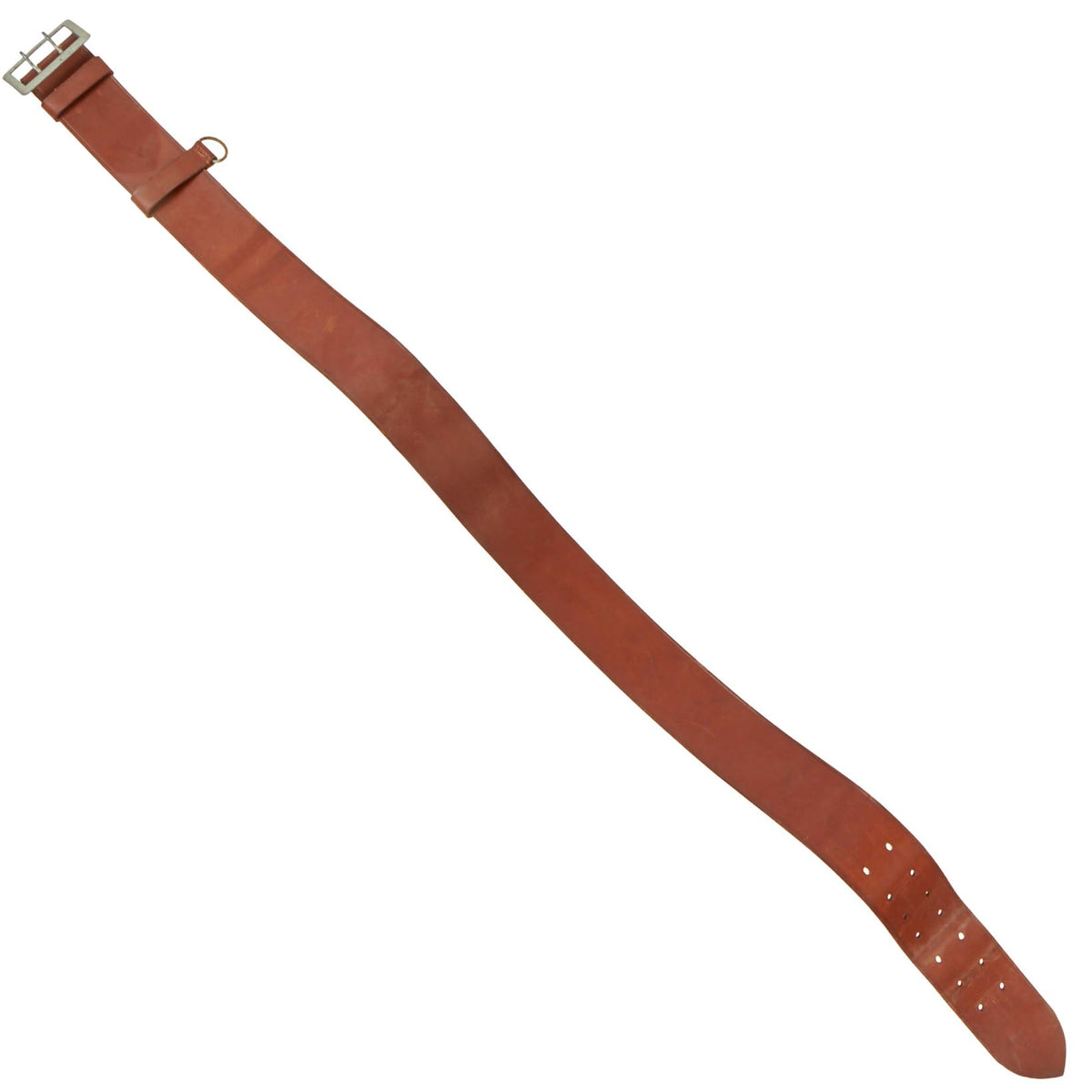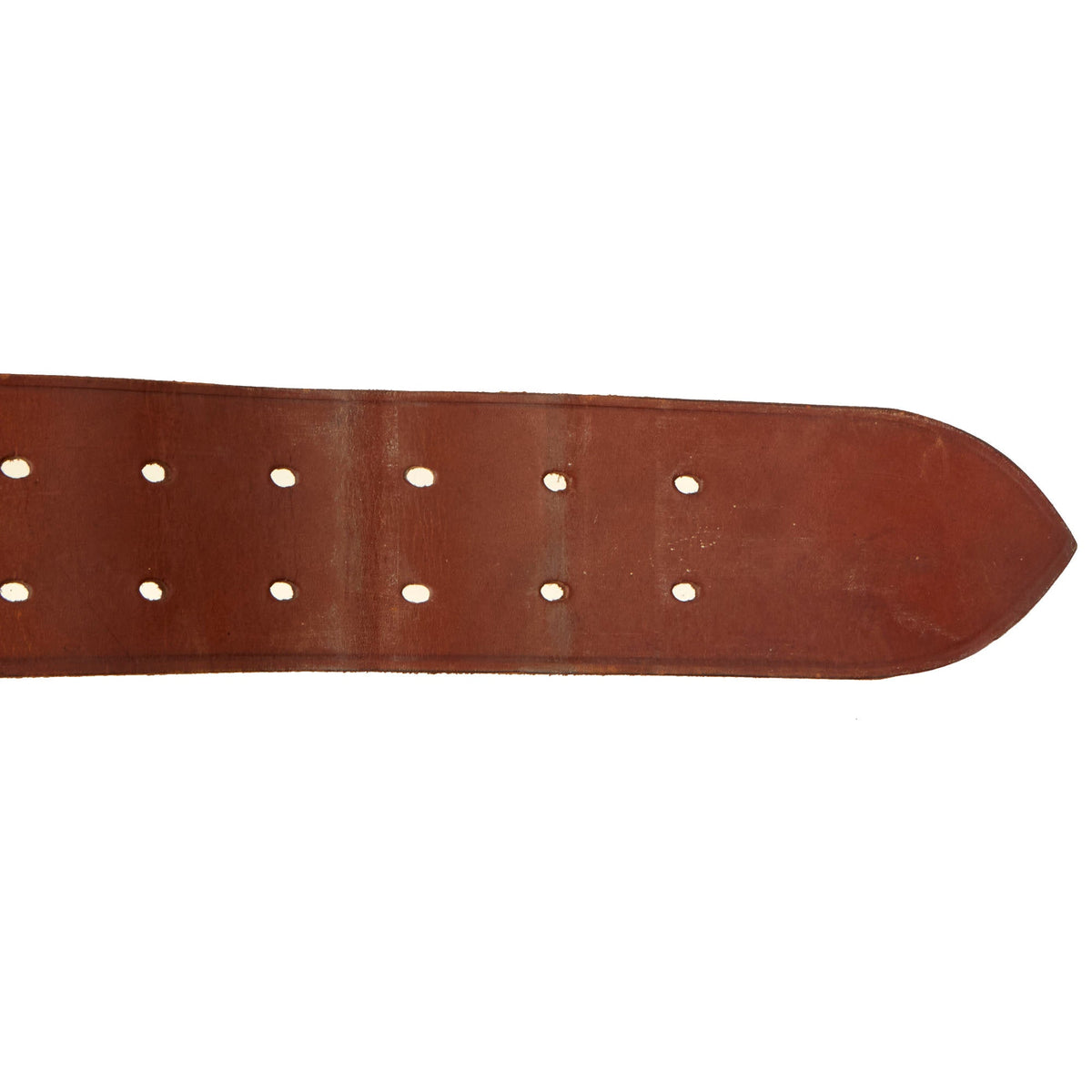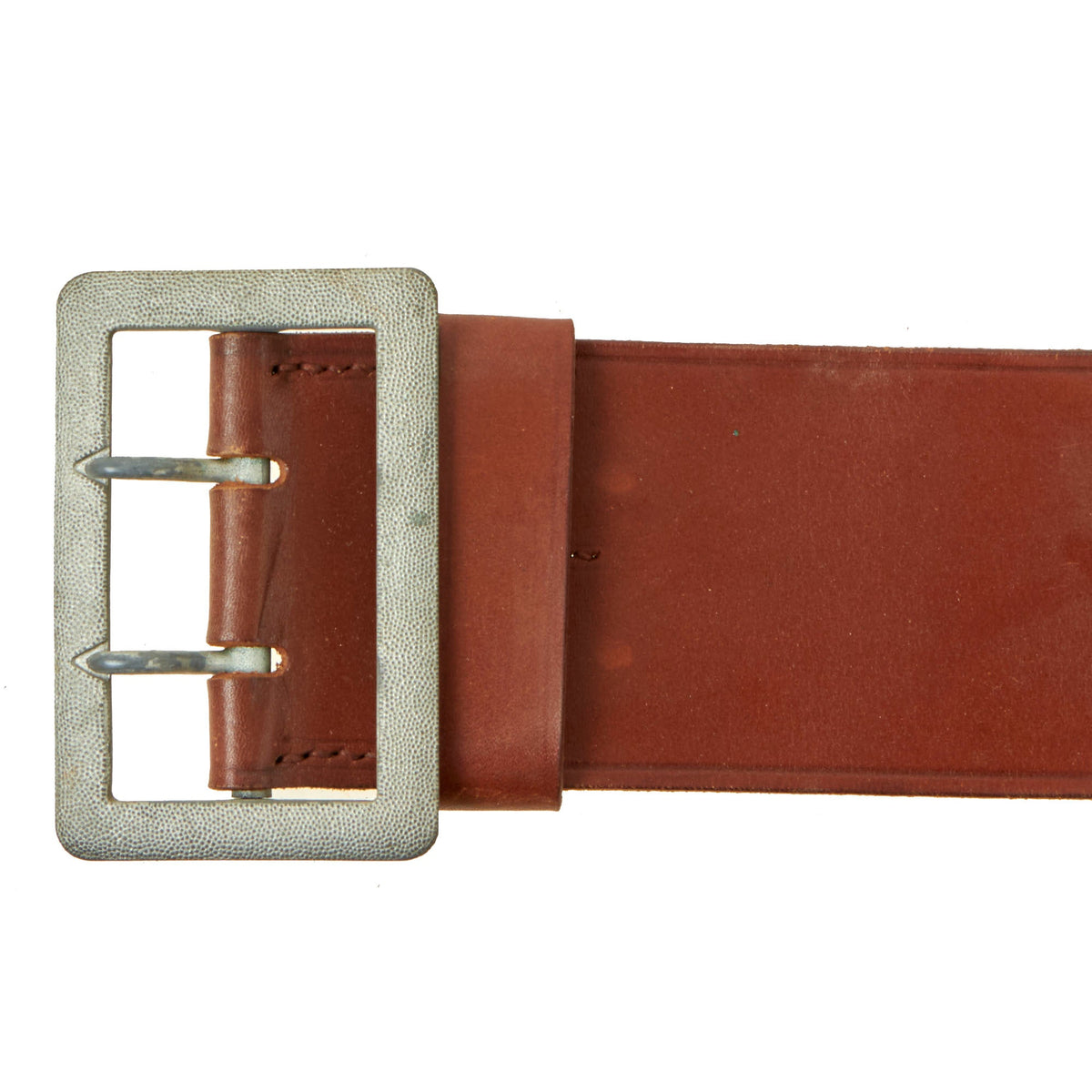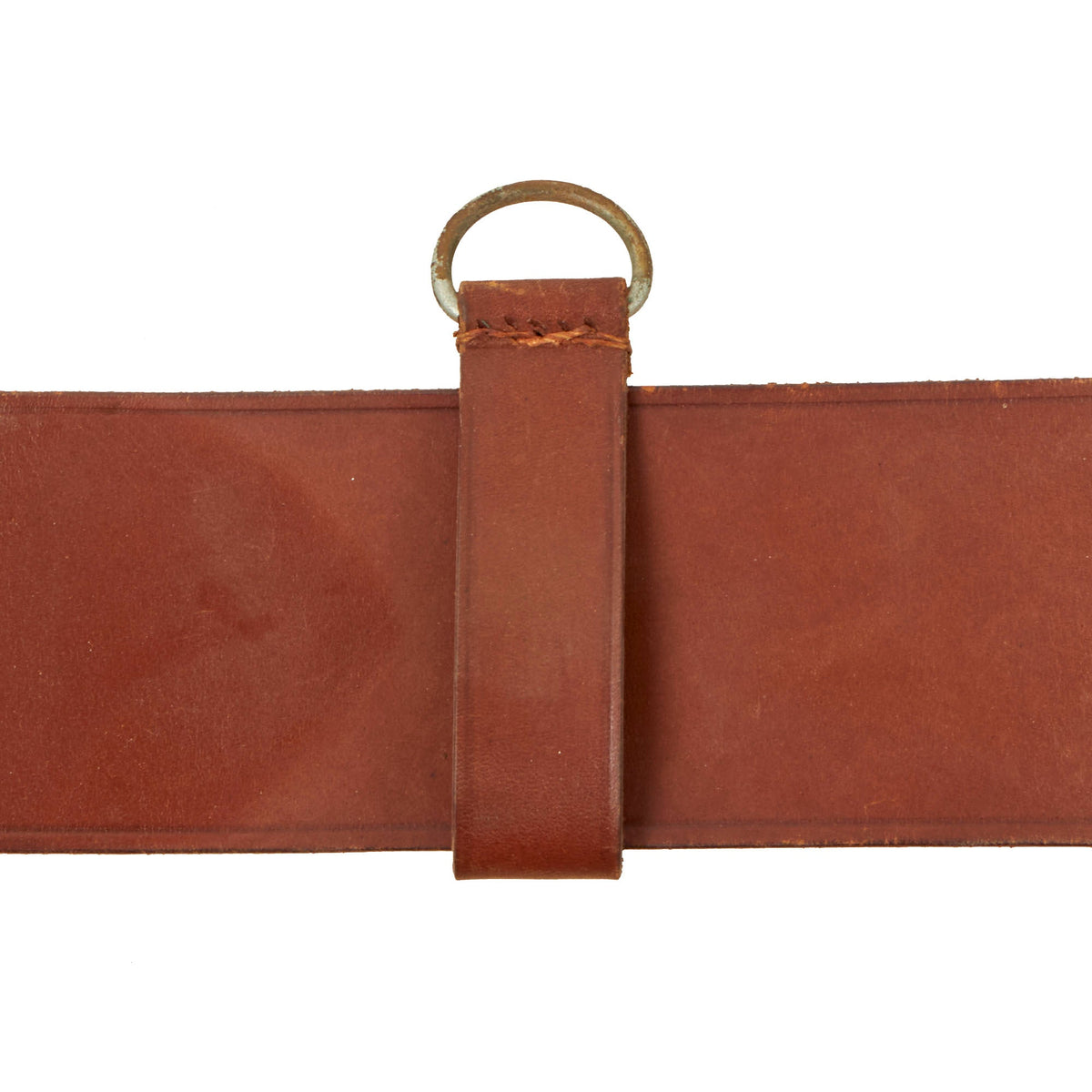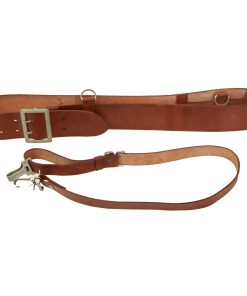Original German Pre-WWII Army Heer Officers 58mm Tan Leather Open Claw Buckle Belt with Cross Strap Original Items
$ 495,00 $ 148,50
Original Item: Only One Available. The belt with open claw belt buckle was original worn during the Weimar Reichswehr era and continued into the Third Reich with minor modifications enacted in May 1934. The open claw belt buckle was authorized for wear by almost all political and military organizations during the Third Reich period with a variety of different institution dates. When worn by political personnel the buckle color was to match the button color of the uniform worn and when worn by military personnel the buckle color reflected Company and Field Grade or General Grade Officer ranks with silver for the Company and Field Grade ranks and gold for General Grade Officer ranks. During the Third Reich there was a prescribed form of wear of the belt and buckle with the buckle being positioned on the right side.
The German’s concern with leather shortages was evident as early as September 1939 when issue of the traditional tall leather marching boot was restricted to personnel serving in the field. During the war further leather shortages resulted in additional regulations that limited or restricted leather usage and included the narrowing of the standard 60mm, (2 1/2″), wide Officer’s leather belts to 45mm, (1 3/4″). Later in the war they also began to use Preßstoff Faux Leather in place of animal leather.
This is a lovely condition pre/early war Wehrmacht Heer Army officer’s open claw belt, made from wider early 58mm width tan leather and fitted with a large aluminum buckle. It comes complete with a great cross strap with aluminum clip fittings, and a sliding loop with a D ring that fits over the belt. The other end attaches to a D ring on a small loop attached on the inside of the belt. The large buckle on the belt does not have any markings, however the small clips on the end of the cross strap are both marked with (RZM) UE8, along with D.R.G.M. (Deutsches Reiches Gebrauchs Musterschutz) followed by a “Barred A”. That means the buckles are a protected patented design under the Reich Government, registered to the maker and owner of the “Barred A” trademark, F. W. Assmann & Söhne of Lüdenscheid, a large maker of belts, buttons, and other accoutrements.
“U.E” indicates Uniformeffekten Erlaubnißschein, (Uniform Accessories Licence), and the manufacturer’s numerical code, “8”. It appears the combined RZM/U.E., markings were utilized circa May 1933 to March 1935. These were used when the RZM was still being officially organized, and indicates that this is a very early belt and cross strap. We measured the belt, and it is quite larger, measuring 46 inches from the last set of holes to the claws, so it was intended for a larger individual.
The belt shows some signs of use, but overall does not look to have seen extensive wear in the field. The finish on the leather is still mostly present, though there is some cracking and the leather is stiff, and all of the fittings are free of major oxidation or other damage. The cross strap is in similar condition, with the only issue being that one of the snap clips has had the clasp portion become loose, and it will detach from the rest of the buckle, as shown in the pictures. It can be put back on, but will relatively easily fall off again.
Overall condition is very good with an exceptional eye appeal! Ready to display!
Presstoff (also Preßstoff or Pressstoff) is the German-language term for a type of ersatz or artificial leather used during the first half of the 20th century. Made of specially layered and treated paper pulp, Presstoff was durable and easily adapted to be used in place of leather, which under wartime conditions was rationed. First invented in the 19th century, it gained its widest use in Germany during the Second World War.
Presstoff use included but was not limited to binoculars cases and straps, horse tack, bayonet frogs, equipment belts, cap visors etc. In short, Presstoff could be used in almost every application normally filled by leather, excepting items like footwear that were repeatedly subjected to flex wear and/or moisture. Under these conditions Presstoff tended to delaminate and lose cohesion.
Fast Shipping with Professional Packaging
Thanks to our longstanding association with UPS FedEx DHL, and other major international carriers, we are able to provide a range of shipping options. Our warehouse staff is expertly trained and will wrap your products according to our exact and precise specifications. Prior to shipping, your goods will be thoroughly examined and securely secured. We ship to thousands clients each day across multiple countries. This shows how we're dedicated to be the largest retailer on the internet. Warehouses and distribution centres can be located throughout Europe as well as the USA.
Note: Orders with more than one item will be assigned a processing date depending on the item.
Before shipping before shipping, we'll conduct a thorough inspection of the items you have ordered. Today, the majority of orders will be delivered within 48 hours. The delivery time will be between 3-7 days.
Returns
The stock is dynamic and we cannot completely manage it because multiple stakeholders are involved, including our factory and warehouse. So the actual stock may alter at any time. It's possible that you may not receive your order once the order has been made.
Our policy is valid for a period of 30 days. If you don't receive the product within 30 days, we are not able to issue a refund or an exchange.
You can only return an item if it is unused and in the same state as the day you received it. You must have the item in its original packaging.
Related products
Uncategorized
Uncategorized
Uncategorized
Armoured Fighting Vehicles of the World: AFVs of World War One (Hardcover Book) New Made Items
Uncategorized
Uncategorized
Australian WWII Owen MK1 Machine Carbine SMG Custom Fabricated Replica with Sling Original Items
Uncategorized
Uncategorized
Uncategorized
Uncategorized
Uncategorized
Uncategorized
Armored Burgonet Helmet & Polearm from Scottish Castle Leith Hall Circa 1700 Original Items
Uncategorized
Uncategorized
Uncategorized
Uncategorized
Uncategorized


